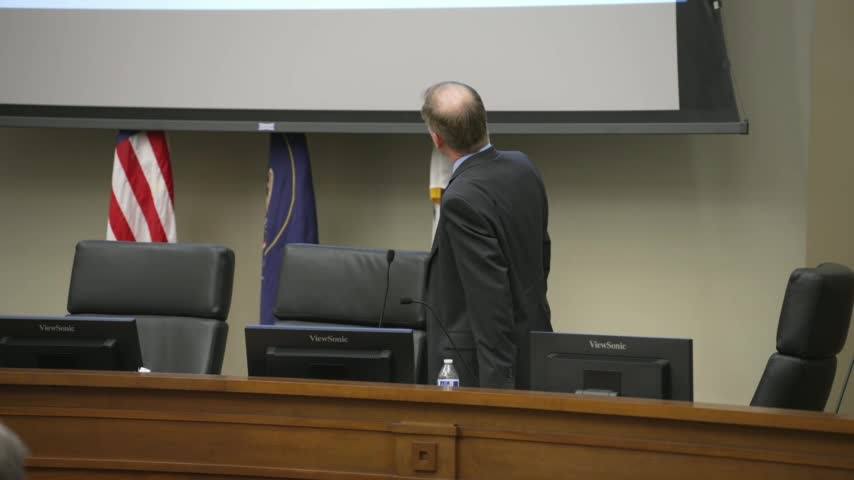US faces nuclear threat as China builds missile silos and Russia advances superweapons
November 16, 2023 | Other , Citizen Journalism , 2024 -2025 Utah Citizen Journalism, Elections, Utah
This article was created by AI summarizing key points discussed. AI makes mistakes, so for full details and context, please refer to the video of the full meeting. Please report any errors so we can fix them. Report an error »

In a recent meeting held in Highland, Utah, discussions led by David Pyne highlighted significant concerns regarding national security, particularly in relation to the ongoing conflicts in Ukraine, Israel, and Taiwan. Pyne emphasized the urgent need for the United States to address its aging nuclear arsenal and the growing military capabilities of adversaries like Russia and China.
One of the key points raised was the lack of nuclear tests and advancements in the U.S. nuclear program since 1992. Pyne noted that the U.S. has not built any new strategic warheads or delivery systems, with plans for future developments not expected until 2029 or 2030. This stagnation, he argued, leaves the U.S. vulnerable as countries like China are rapidly expanding their nuclear capabilities, including the construction of extensive missile fields capable of housing thousands of warheads.
Pyne also discussed the advanced nuclear weapons systems being developed by Russia, including hypersonic missiles that pose a significant threat to U.S. security. He warned that the U.S. lacks comparable systems and is falling behind in the arms race, which could have dire consequences for national defense.
The meeting also touched on the implications of cyber warfare and biological threats, with Pyne asserting that adversaries are engaging in low-intensity warfare against the U.S. through cyber attacks and the potential development of targeted biological weapons. He expressed concern over the lack of a robust response to these threats, particularly in light of the COVID-19 pandemic, which he described as a form of biological attack.
In response to these challenges, Pyne highlighted efforts at the state level to enhance grid resilience and protect against electromagnetic pulse (EMP) attacks, which could cripple the nation’s infrastructure. He mentioned the establishment of a Utah Grid Resilience Committee aimed at developing recommendations for hardening the electrical grid against such threats.
The discussions at the Highland meeting underscore the pressing need for the U.S. to reassess its defense strategies and capabilities in light of evolving global threats. As these issues continue to develop, local communities may feel the impact of national security decisions, making it crucial for residents to stay informed and engaged in the conversation surrounding their safety and preparedness.
One of the key points raised was the lack of nuclear tests and advancements in the U.S. nuclear program since 1992. Pyne noted that the U.S. has not built any new strategic warheads or delivery systems, with plans for future developments not expected until 2029 or 2030. This stagnation, he argued, leaves the U.S. vulnerable as countries like China are rapidly expanding their nuclear capabilities, including the construction of extensive missile fields capable of housing thousands of warheads.
Pyne also discussed the advanced nuclear weapons systems being developed by Russia, including hypersonic missiles that pose a significant threat to U.S. security. He warned that the U.S. lacks comparable systems and is falling behind in the arms race, which could have dire consequences for national defense.
The meeting also touched on the implications of cyber warfare and biological threats, with Pyne asserting that adversaries are engaging in low-intensity warfare against the U.S. through cyber attacks and the potential development of targeted biological weapons. He expressed concern over the lack of a robust response to these threats, particularly in light of the COVID-19 pandemic, which he described as a form of biological attack.
In response to these challenges, Pyne highlighted efforts at the state level to enhance grid resilience and protect against electromagnetic pulse (EMP) attacks, which could cripple the nation’s infrastructure. He mentioned the establishment of a Utah Grid Resilience Committee aimed at developing recommendations for hardening the electrical grid against such threats.
The discussions at the Highland meeting underscore the pressing need for the U.S. to reassess its defense strategies and capabilities in light of evolving global threats. As these issues continue to develop, local communities may feel the impact of national security decisions, making it crucial for residents to stay informed and engaged in the conversation surrounding their safety and preparedness.
Don't Miss a Word: See the Full Meeting!
Go beyond summaries. Unlock every video, transcript, and key insight with a Founder Membership.
✓
Get instant access to full meeting videos
✓
Search and clip any phrase from complete transcripts
✓
Receive AI-powered summaries & custom alerts
✓
Enjoy lifetime, unrestricted access to government data
30-day money-back guarantee


